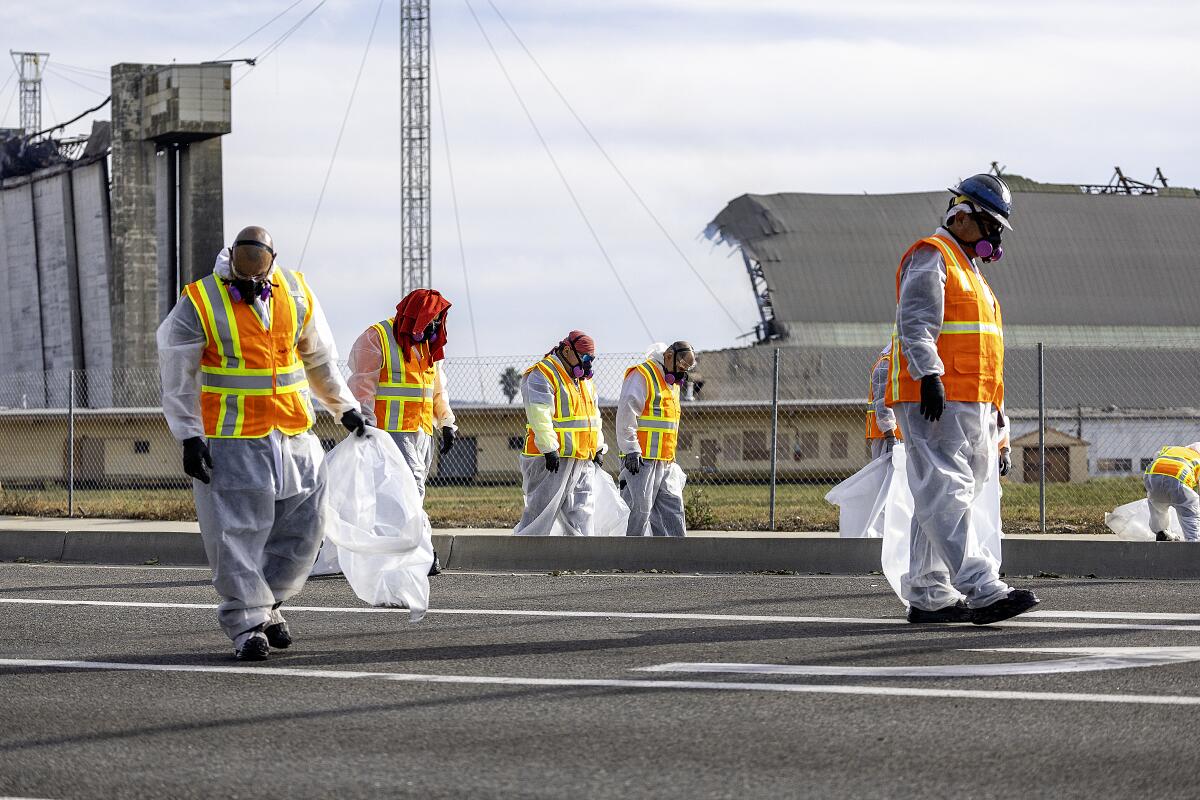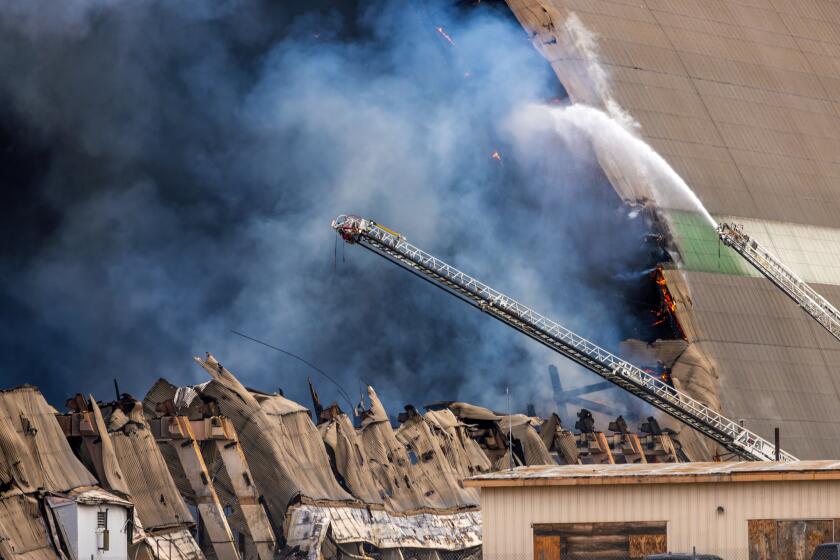Historic blimp hangar’s massive doors are coming down; Tustin asks state and feds for help

- Share via
Crews on Thursday began deconstructing the remnants of a historic blimp hangar in Tustin that caught fire exactly a month ago and burned for weeks, prompting frustration and fear among residents concerned about air quality.
The process of taking down the 150-foot-high doors — all that remains of the north hangar after the fire — is expected to take roughly two weeks to complete, according to the city.
While that effort is underway, city officials in Tustin are putting increased pressure on the state and U.S. Navy, which owns the hangar at the now-defunct Marine Corps Air Station, to support cleanup efforts in the wake of the fire.
“Frankly, it is the time for the Navy to step up,” Tustin Mayor Austin Lumbard said during a City Council meeting on Tuesday. “It is the time for the state to step up. It is the time for the environmental agencies to do what they are empowered and authorized to do, which is to give health guidance.”
Section after section of the historic north hangar at the now-defunct Marine Corps Air Station in Tustin collapse in a massive fire. Whatever remains will be demolished.
An 80-year-old relic of Orange County’s military history, the massive wooden hangar became an environmental nightmare for the city when it caught fire in the early morning hours of Nov. 7. The blaze reignited several times, forcing the closure of nearby schools and shuttering residents inside their homes as the fire released asbestos, lead and other toxic substances into the air.
The cause of the blaze, which burned until Dec. 1 in what officials called “one of the most challenging structure fires in the county’s history,” remains under investigation.
Fire officials determined early in the fire that the safest option was to allow the blaze to burn itself out.
For weeks, residents have packed city meetings to express frustration as they’ve struggled to get information about air quality and airborne contaminants, including asbestos.
Some residents who have paid for their own indoor testing have found asbestos, prompting concerns that the interior of homes may need to be cleaned.
Tustin neighbors say they’ve received little communication about the risks they may face from toxins after a massive hangar fire.
Officials said the city has taken what it could from its reserves to fund asbestos testing and cleanup in the neighborhoods surrounding the hangar. The Navy committed $1 million early on in the fire, but city officials say that’s not enough to make a dent in the overall costs, which could reach into the tens of millions.
Christopher Dunne, a spokesman for the Navy, said the agency was aware that $1 million was not going to cover the full cost of cleanup. However, the Navy could release that money quickly while it works on accessing additional funds, Dunne said.
“The city and the Navy are working together every day trying to carve this thing out to make sure the city gets what they need to cover the costs that they’ve already incurred plus costs that they have not incurred yet but we know are coming,” Dunne said.
Council members on Tuesday implored residents to help them push local, state and federal agencies to help.
The city and county declared local emergencies in the days after the fire broke out and asked Gov. Gavin Newsom to declare a state of emergency to open up access to funding for recovery, but that has not happened, officials said.
“For our federal and state and local partners that are listening this emergency is not over,” Councilmember Letitia Clark said.
More to Read
Sign up for Essential California
The most important California stories and recommendations in your inbox every morning.
You may occasionally receive promotional content from the Los Angeles Times.
















